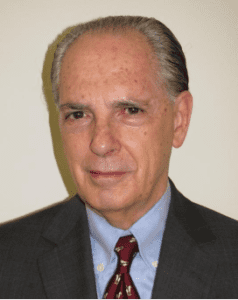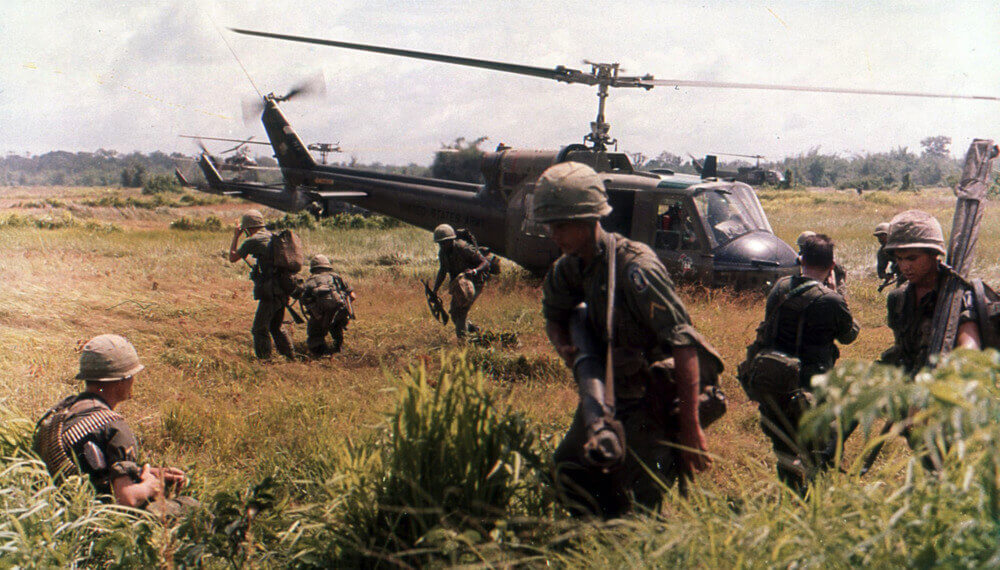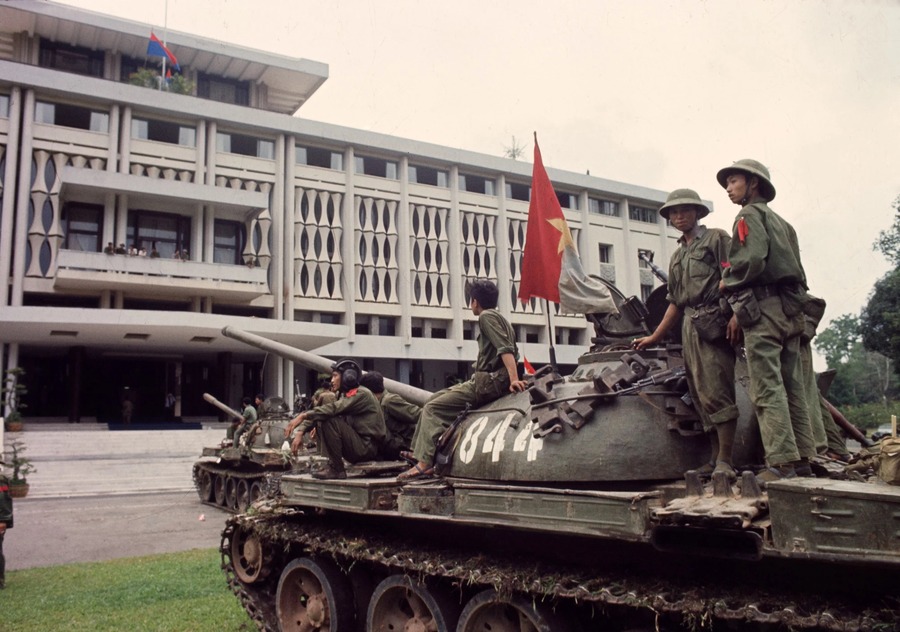Fifty years ago, on April 30, 1975, Communist-run North Vietnam seized Saigon, the capital of the U.S.-backed South Vietnam.

Although the last American combat troops had left the country a month earlier -following the signing of the Paris Peace Accords between Washington and Hanoi- the images of the U.S. Embassy’s personnel being evacuated by helicopters on April 30, epitomized the end of America’s involvement.
But, why did Washington get bogged in a war so far away from home? In such a peripheral part of the world, indeed. In order to understand the reason, a bit of historical context is required.
Containment
At successive summits during World War II -at Teheran, Yalta and Potsdam- Soviet and U.S. leaders had decided that they would be responsible for rebuilding the nations under their control, once the war ended. At the same time, they would permit for free elections to take place within their occupied territories.
Joseph Stalin, however, failed to live up to his word. Instead of allowing elections to take place in Soviet’s occupied countries, he installed communist puppet regimes in them. Albania, Bulgaria, Czechoslovakia, East Germany, Hungary, Poland, Romania in Europe, and North Korea in Asia, became all Soviet satellites.
In his famous 1946 speech at Fulton Missouri, former British Prime Minister Winston Churchill denounced that an “Iron Curtain” had fallen across Europe. Meanwhile, in 1946, America’s Charge D’Affaires in Moscow, George Kennan, sent an 8,000-word telegram to the State Department stating his views on Soviet Union expansionism.
In this so-called “long telegram”, Kennan explained the reasons why the United States should “contain” such expansionism. As he put it in a published version of his argument the following year: A “long-term, patient but firm and vigilant containment of Russian expansive tendencies” was needed, if American values and interests around the world were to be preserved. This gave birth to what would become America’s main foreign policy strategy in the decades ahead: Containment to communist expansion. (Kroenig, 2020, pp. 140-142; Gaddis, 2005, Chapter One).
Falling domino principle
President Dwight D. Eisenhower introduced the notion of the “falling domino” principle, as a variation on the central theme of containment. This, in relation to Indochina, where France had been evicted as a colonial power by the Vietnamese movement Viet Minh. A movement led by Ho Chi Mihn that had received the support of China and the Soviet Union. Although Vietnam got divided into a Communist North and a pro-Western South, as a result of the Geneva Accords that put an end to the war between France and the Viet Minh, North Vietnam sought to reunite the country under a single communist regime.
Indeed, the Viet Minh had accepted a negotiated settlement under the Geneva Accords, even when it believed that total military victory over the French was just a matter of months. It did so, under the agreement that a couple of years later both North and South would be reunited, through elections, under the regime chosen by the majority. Given its popularity, the Viet Minh was convinced that it could win through the ballots, which it had almost attained through arms.
Conscious that the ballots would lead to defeat, South Vietnam’s leader Ngo Dihn Diem refused going to elections, thus breaching the agreement. War broke between North and South as a result, while a communist supported insurgency engulfed South Vietnam. For the U.S., the defeat of Diem’s regime would have been tantamount to a communist takeover of the South, something that under the containment logic was not acceptable.
Hence, the “falling domino” principle. Within it, an analogy was made with a dominoes row. If the first piece were to fall, the rest would follow. Thus, the importance of avoiding that such first piece could be knocked down.
In this case, the row represented not only South East Asia, but Asia as a whole. Eisenhower’s successor John F. Kennedy accepted the logic of this principle, thus making Vietnam a test case of America’s determination to contain the expansion of communism in Asia. However, notwithstanding that he opened the door for the subsequent massive American military involvement in Vietnam, he kept it limited to money, arms and military advisors (although increasing them substantially in relation to the previous administration). It was up to Lyndon B. Johnson, after Kennedy’s assassination, to put in motion the massive and direct U.S. involvement (Leeson and Dean, 2009).
Why Johnson?
But why Johnson? His domestic “Great Society” program had won him a special place in American history. This overly ambitious package of domestic reforms in civil rights, education or fight against poverty, was comparable in scope to Franklin Delano Roosevelt’s “New Deal”. Moreover, his relations with Congress in order to give shape to such reforms had been truly masterful. Why, then, would he be the one that went overboard in relation to Vietnam?

Upon his arrival to the White House, he had been one of the most experienced politicians to reach that office. However, his know-how was mainly restricted to domestic affairs. Foreign policy was, for the most, an alien subject for him. As a result, he felt deeply insecure when dealing with this area. Insecurity, thus, was the reason that led him to overreact in relation to Vietnam.
Indeed, “paradoxically, the dream of a Great Society pulled him in the direction of deeper involvement in Indochina, for he feared a loss of effectiveness with Congress if he appeared weak. “If I don’t go in now”, he once said, “and they show later I should have gone, then they’ll be all over me in Congress. They won’t be talking about my civil-right bill or education or beautification. No sir, they’ll push Vietnam up to my ass every time. Vietnam. Vietnam. Vietnam. Right up my ass”. (Destler, Gelb and Lake, 1984, pp. 61-62).
As Johnson explained to Doris Kearns: “I knew that if we let Communist aggression succeed in taking over South Vietnam, there would follow in this country an endless national debate – that would shatter my Presidency, kill my administration, and damage our democracy”. (Destler, Gelb and Lake, 1984, p. 62).
So it was that by wanting to preserve the achievements of his Great Society, and the success of his presidency, he not only put in motion America’s Vietnam nightmare, but the ultimate failure of his presidency. Indeed, he didn’t present himself for re-election in 1968, given his huge unpopularity. It was up to Richard Nixon to follow suit with the war.
Nixon’s “Vietnamization” of the war
Nixon wanted to “Vietnamese” the conflict, taking American troops out of Vietnam. In order to attain such aim, though, he escalated the war, bringing it to neighbouring Cambodia and Laos as well. He not only carpet bombed those countries, but also put boots on the ground. In the end, Hanoi was forced to negotiate with the results explained above. Although the U.S. could get out of the conflict, and “Vietnamese” the war, South Vietnam was rapidly overrun as a result.
George Kenan, the main architect of the containment policy had been opposed to America’s involvement in Vietnam, considering it a deviation from containment. In his view, Vietnam was of little strategic value, not worthy of the U.S.’ sacrifices made there, where fifty thousand young American lives were lost.
In the end, Richard Nixon’s presidency would be a failed one. Although not due to Vietnam, but to Watergate. And even if Nixon fell much deeper than Johnson, the extent of their fall would be similar, as Johnson fell from much higher.
References:
Destler, I.M., Gelb, Leslie H. and Lake, Anthony (1984). Our Own Worst Enemy. New York: Simon & Schuster.
Gaddis, John Lewis (2005). The Cold War: A New History. New York: The Penguin Press.
Kroenig, Matthew (2020). The Return of Great Power Rivalry. Oxford: Oxford University Press.
Leeson, Peter T. and Dean, Andrea M. (2009). “The Democratic Domino Theory”. American Journal of Political Sciences, 53 (3), July.
Author: Alfredo Toro Hardy, PhD – Retired Venezuelan career diplomat, scholar and author. Former Ambassador to the U.S., U.K., Spain, Brazil, Ireland, Chile and Singapore. Author or co-author of thirty-six books on international affairs. Former Fulbright Scholar and Visiting Professor at Princeton and Brasilia universities. He is an Honorary Fellow of the Geneva School of Diplomacy and International Relations and a member of the Review Panel of the Rockefeller Foundation Bellagio Center.
Image Credit: AP







